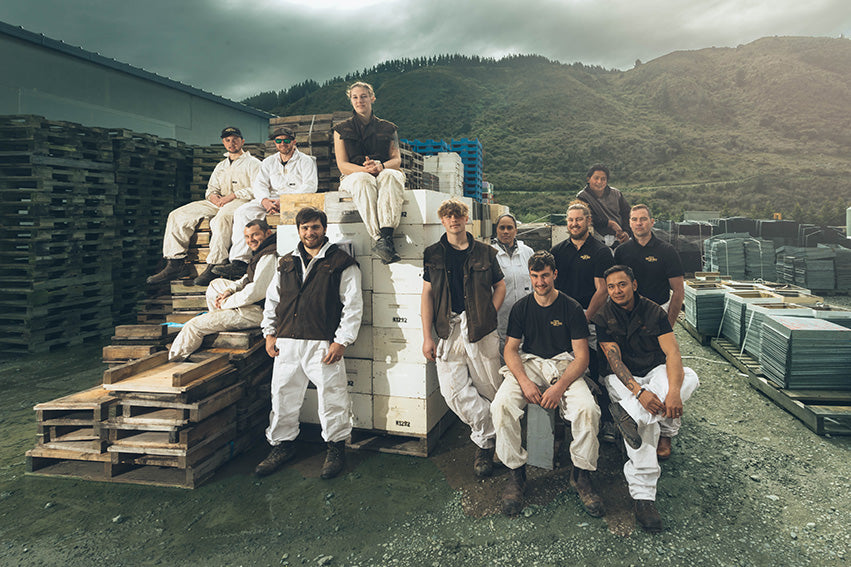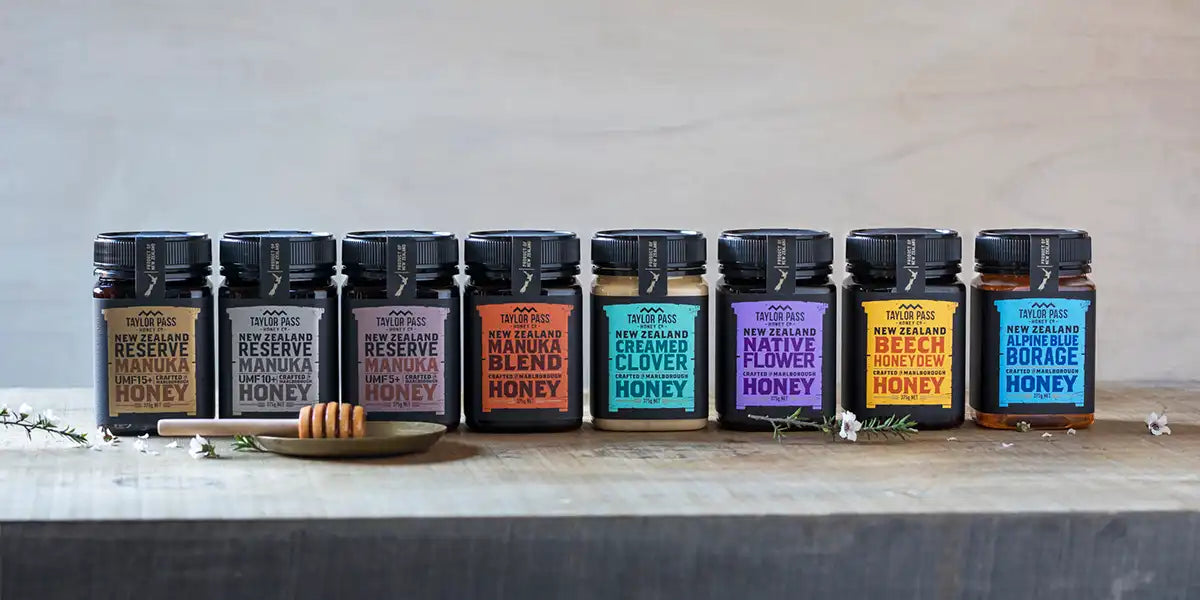Meet the Taylor Pass Honey Beekeepers

In honor of National Bee Awareness Month, we interviewed some of our very own Beekeepers to learn about their career journeys, their favorite parts of the job and exactly when they fell in love with all things bees!
Steve
What was your journey to becoming a beekeeper?
Born and bred in Otago into a long heritage of livestock buyers, I’ve always been keen on doing my own thing and it came as a bit of a surprise to everyone when I found my passion working with some of the world’s smallest livestock, bees!
I’ve been working in apiculture most of my life, graduating with an advanced certificate in Apiculture and then starting work in Central Otago, moving to Marlborough and now as Apiary Manager for Taylors Pass Honey Co in Wanaka. I’ve worked outside the industry but there’s something about the challenges of beekeeping that always brings me back. I love the complexity of hive management, the fluctuations in the honey market and the dedication and resilience it takes to be working in some remote areas. I’m probably most excited about being able to pass on my knowledge and to grow the great teams of people I work with, and the opportunities to innovate and develop this crucial primary industry.
Any myths you would like to dispel?
One of the major myths or questions I get asked a lot especially during school visits is with regards to smoke damaging or hurting the bees. This comes from the bee movie.
I explain that the smoke is used to help calm the hives and allow the beekeeper to check the hive’s health without hurting the bees.
What’s your favorite location and honey type?
My favourite location is the back of west Wanaka station and on a good day up the back of the station you can see the Mount Aspiring glacier. It never gets old and I never forget how fortunate and privileged I am that my profession allows me to be in such pristine locations.
Creamed Southern Rata is my favourite honey. This is the honey that started my love for producing monofloral honey. It is the true taste of NZ rain forests on the west coast of the South Island. The vibrant red flower lights up the hills and is an incredible site. With the honey only being able to captured every three to seven years, it is a unique taste of NZ.

Byron
What was your journey to becoming a beekeeper?
As a young 16 year old lad, I was asked by a friend if I wanted a summer job lugging heavy honey boxes up a ramp for a local beekeeping company. I needed a job and it sounded like fun, said yes and the rest is history.
What is a myth you often hear about beekeeping that you’d like to address?
How often do you get stung and how much does it hurt? It can vary from nothing to hundreds in a day, depending on the day or beehive. You also never get used to the pain of a bee sting, it’s just that some can be more painful than others.
Describe an average workday for you, from morning until night.
Not one day is ever the same, the work may be, but you get to spend it in a different location every day. I wake up about an hour & half before start time, have a coffee, cuddles with my kiddies, help get them fed and dressed for school, head off for work to catch up with the crew and start prepping for the day ahead. We work our beehives in some of the most picturesque places you could think of; out the backs of farms, overlooking lakes, enjoying everything our backyard has to offer. Once our day is finished, we unpack and park up vehicles and head home. If it’s not too late I hang out with my family and help get kids ready for bed & then chill. Eat, Sleep, Repeat.
What is the best thing about being a beekeeper?
For me, it’s being in a different location daily and watching a hive go from a tiny cluster of bees coming out of winter, to a thriving box collecting some of the finest honey you can taste
What is your favourite way to eat honey?
Straight out of the frame.

Tomas
When did you first fall in love with bees?
I fell in love with bees when my mother bought her first hives from a beekeeping company in Argentina, where I grew up.
What practices do Taylor Pass Honey have that you feel differentiate us from other honey companies?
This is a company that really looks after its employees.
What is a myth you often hear about beekeeping that you’d like to address?
That the bees swarm because of the smell of particular flowers but that is not correct. They simply swarm because of the massive nectar flow.
What’s your favourite Taylor Pass Honey location?
Awatere Valley, in Marlborough, right at the top of the South Island of New Zealand.
Any lessons learned on the job that you apply to other parts of your life?
Yes, resilience. Bees have taught me that no matter what happens, even a flood….next day, you wake up, dry yourself off and carry on.

Serhill
What was your journey to becoming a beekeeper?
I started by trading honey, but then decided to give producing it a go on my own. Once I’d experienced that – there was no going back.
What practices do Taylor Pass Honey have that you feel differentiate us from other honey companies?
Highly organized and structured team with a great work ethics and great sense of team cooperation.
What is a myth you often hear about beekeeping that you’d like to address?
If you have more hives, you produce more honey. That is not how it works. It is about running your hives efficiently to ensure the health of the hives and maximise the honey output.
What is your favorite Taylor Pass Honey type and why?
Rata is one of my favourite types of honey. It has a very smooth texture and a distinctive taste.
What’s your favourite Taylor Pass Honey location?
Quite a few really. Marlborough is quite unique for having different sceneries. Up the Awatere valley, you’ll see a tussock desert while in Picton and in the Marlborough Sounds, it is basically a rainforest...awesome.
What is your favourite way to eat honey?
Onsite, while tasting what’s coming in from the hive.


